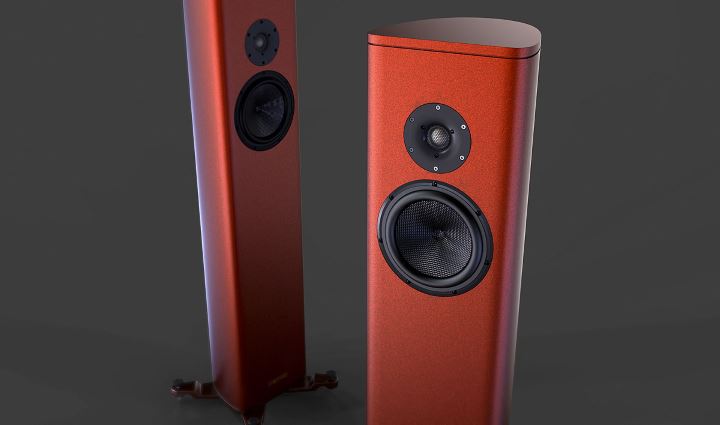
I always know I’m in trouble when the freight truck pulls up in front of my house and I make the 200 foot walk down to see what has arrived. It usually means several hundred pounds of amplifiers or loudspeakers on a wooden pallet to haul up the driveway and wrestle into my listening room, unpack and site, and then find a place to store the boxes or crates. I think the most useful item in my reviewing toolkit is my heavy duty hand truck, without which none of this would be possible. All that inconvenience vanishes from memory, however, when I sit down to listen to my latest delivery. For my significant other, good things come in small packages. For me, it is just the opposite. So it went when the Magico S1 loudspeakers arrived at my door.
I first heard Magico speakers in 2009 when attending a computer audiophile seminar put on by Chris Connaker at Fantasy Studios in San Francisco. Part of the presentation involved listening to music as it was being played in one of the recording spaces, and then listening to Keith Johnson’s efforts at capturing the live performance played back in Studio A. In this case, the speakers were the M5s that Jonathan Valin had just fallen in love with. Powered by Boulder electronics and a custom music server designed by Matan Arazi feeding a Pacific Microsonics Model Two DAC, the playback was state of the art, and I was awed by the resulting sound. In fact, I thought the recording sounded better than the live music. It was more coherent, with better blending of the instruments, proving that sometimes, in the right hands, thirteen microphones are better than one.
On the Sunday after the seminar, I also had the good fortune to take a tour of the nearby Magico manufacturing facility. Alon Wolf did the honors. I remember being supremely impressed with the quality of parts being used - from cabinets to crossovers to drivers - and the attention to the smallest detail. I also recall that the end products were visually stunning. When we were through with the tour, Alon took me into his listening room and introduced me to the Magico Ultimate horn loudspeakers. Staggering size, and staggering sound with all types of music. This was obviously a company that was going to shake up the status quo in high-end loudspeakers.
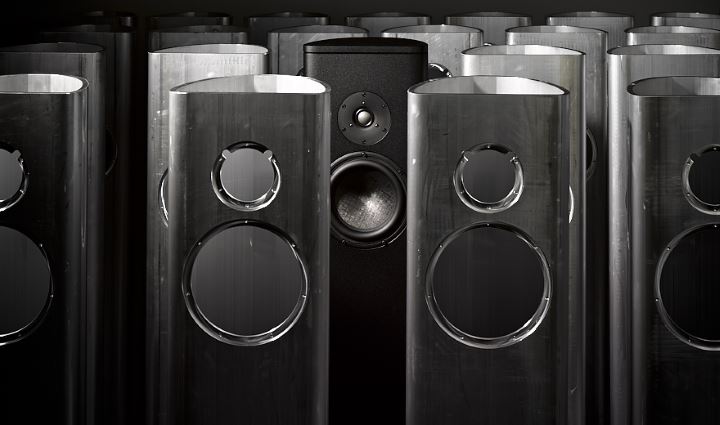
My next run-in with Magico loudspeakers occurred when I was visiting my son in Boston in 2010. I spent an afternoon at Goodwin’s High End, Boston’s premier hi-fi emporium. Up for demo were the Magico V3 floorstanding loudspeakers. They left a profound impression on me. They were set up in Goodwin’s large listening room 12-15 feet apart and filled the room with exquisite sound. The all-aluminum M6s were located in the rear corners. Time and a sense of propriety prevented me from requesting that they be set up so I could listen to them as well. As I recall, they were around $100,000, a smidgen over my budget.
Since 2010 I have heard every model Magico loudspeaker on demo at numerous trade shows, from the Mini II to the Q7, and they never fail to impress, regardless of where they fall on the size and price spectrum, and regardless of the components that they are paired with, though I have my favorites.
Although Magico’s initial efforts at consumer loudspeakers involved cabinets constructed of stacked Baltic birch with aluminum front panels bolted through the rear and ratcheted down until they were absolutely one with the cabinet, for the past several years it has adopted aluminum as its cabinet material of choice, both for its rigidity and non-resonant characteristics. Cabinets, both prototypes and finished designs, were initially outsourced, which proved unworkable - too time-consuming and expensive. So in 2012 Magico acquired a CNC-controlled machine shop, and thereafter moved all of its operations to a new 40,000 square foot facility (coincidentally the same size as Wilson Audio’s), which contains, in addition to design, manufacturing, assembly and shipping areas, corporate offices and a new, significantly larger, custom designed, quarter-million dollar listening room. With the expansion, new and improved models are now introduced with greater regularity. For its tenth anniversary, Magico has designed a new limited edition M-Project loudspeaker. Sorry guys, they are all spoken for.
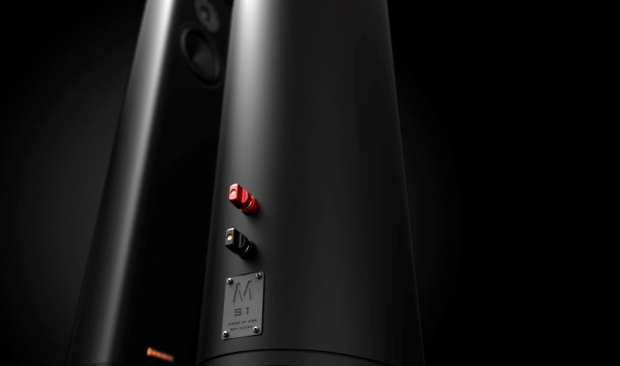
Description
Following on the phenomenally successful Q series, which stands at the pinnacle of its lineup, Magico has introduced the more affordable S series comprised of the S1, S3, and S5 models. Finally, a Magico for the rest of us (sort of). The Magico S1s, Magico’s least expensive offering at $12,600/pair, are a (relatively) small, sealed, two-way floor-standing loudspeaker measuring approximately 46 inches tall by 10 inches wide by 9 inches deep. They are triangular rather than box shaped, with rounded corners, to minimize internal standing waves. The cabinets are of entirely aluminum construction, including both the exterior monocoque enclosure and internal braced frame structure, which accounts for their 95 pound weight, and come standard in Magico’s elegantly textured M-Cast powder coat finish, available in six colors - black, pewter, silver, rose, bronze, and blue. Optionally, they are available in Magico’s striking glossy painted M-Coat finish in a similar range of colors - black, titanium grey, pearl white, cherry red, orange, and blue - for an upcharge. Four included heavy-duty outrigger spikes are bolted onto the bottom of each speaker for rigid stabilization. The S1s are the perfect size for my 12 foot by 15 foot listening room, though they would clearly also work well in larger quarters. The S1s include magnetically attached grills to protect the drivers from curious fingers. Needless to say, they remained in the box. Overall, the S1s are built like a tank. Given their construction quality, Magico’s five year parts and labor warranty is not surprising. Would that all high-end manufacturers expressed similar confidence in their products.
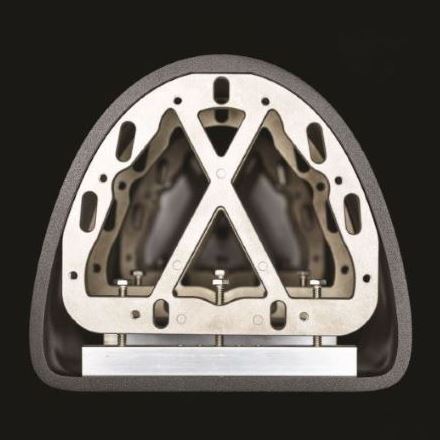
Driver complement for the S1 includes Magico’s proprietary Nano-Tec 7″ mid-woofer, whose cone is comprised of carbon nanotubes in a Rohacell foam sandwich for stiffness and light weight, and a dual-neodymium underhung motor system with pure titanium voice coil-former. The tweeter is a similarly sophisticated 1″ beryllium tweeter, the same tweeter found in the S5. It is interesting that the driver sizes are the same as the stand-mount Q-1, though the drivers themselves are different. Magico closely guards the design and electrical parameters of its Elliptical Symmetry Crossover, so that is a mystery (sometimes not knowing is half the fun). Nevertheless, memory of their prior designs and a bit of research reveals copper foil inductors and special Mundorf capacitors figure in the intentionally reduced part count. Taken together, the two drivers give the S1 a frequency response of 32-50,000Hz (-3db point unspecified). Impedance is a nominal 4 ohms with a sensitivity of 86db, not especially difficult to drive, though it probably prevents powering with low wattage SET amplifiers. Although Magico’s speakers are usually demoed with solid-state amplification, I thought the slightly more sensitive S5s sounded marvelous driven by the 50 watt/channel Absolare Passion components at CES 2014, so don’t rule out partnering with tubes altogether. For instance, I’d love to hear the S1s with the Audio Research Reference 75, which provides more headroom than the Absolare.
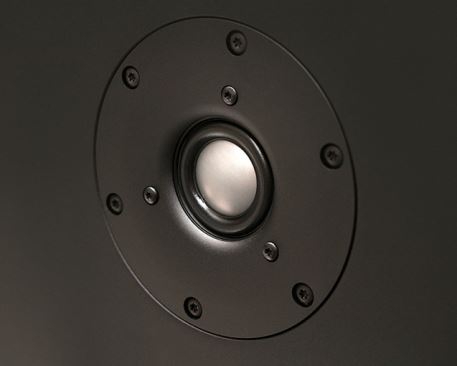
Setup
Setup was straight-forward. After some experimentation, I placed the S1s 37 inches from the front wall and 32 inches from the side walls (measured from the front baffle along the drivers’ center axis), and toed-in so that the resulting isosceles triangle met at the listening position 104 inches away. This resulted in a wide and deep soundstage, with the speakers disappearing, except on early recordings mixed with hard pans left and right. I can’t fault the speakers for bad recordings. It’s why you should always go for the Beatles original mono recordings (newly remastered versions of which now available on vinyl). Early stereo recordings leave a lot to be desired, as the recording engineers were feeling their way along. Ping pong and freight trains tended to dominate their thinking. The early Dylan stereo mixes were classic in that regard, with guitar in the left speaker and vocals in the right, and harmonica appearing just about anywhere, without consistency from track to track. Now, where was I? Oh yes, the ease with which the S1s were setup means they are likely to perform well in a variety of listening environments. That’s not to say you won’t be rewarded by fine-tuning placement and toe-in for the best effect, so be conscientious.

Listening
Since my S1s were a review pair, they had already be “broken-in” by the time they reached my listening room, saving me 200 hours of playback time before serious listening could begin. (“Serious listening” is somewhat of a misnomer. It implies a lack of joy in what you are doing, which is a pretty tall order when it come to listening to music on a fine playback system. Let’s call it “focused listening” instead since it is more in the nature of sound analysis.) I was grateful; I was anxious to get started. From the outset, I knew that these speakers were something special. They just sounded right. How right I was to find out.
As most of you have come to expect, I review loudspeakers and components predominately with recordings of acoustic instruments. It is not that I don’t like and listen to rock and roll; to the contrary. it is just that I have no other frame of reference than the sound of live acoustic instruments. Who knows whether amplified instruments and electronica are properly reproduced?
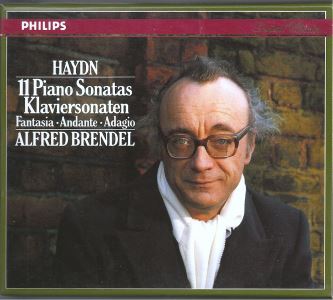
With that in mind, I put on a collection of Haydn piano sonatas performed by Alfred Brendel to get a feel for piano tone. These are recordings I know well; I have been listening to them for more than two decades. The miking of the piano on this recording splits the difference between close-miking inside the piano and miking from a stage or audience perspective. My ears tell me that the lid of the piano was wide open and that a stereo pair of microphones were located in front of and above the piano, six to eight feet away from the soundboard. This allows the recording engineer to achieve an intimate performance yet capture some of the ambiance of the studio or hall. In addition, it presents a subtle blending of left and right hand notes, so that the sound is more coherent than the sometimes schizophrenic sound when microphones are placed inches away from the bass and treble strings. I would characterize the performance as playful. For the Piano Sonata No. 33 in C minor, Hob. XVI, 20, there is little action in the lower registers, so tonal assessment is generally limited to the mid and upper frequencies.
When listening to these piano sonatas, three words come to mind: clean, neutral, percussive, the very antithesis of a creamy smooth legato. Which is how they are played by Brendel, not how they are interpreted by the loudspeaker. Which is what we want; otherwise, recordings become homogenized, or at least colored in the same hue. Each note is clearly articulated in its own dynamic envelope, with the sustain pedal used sparing. This underscores how quiet the S1s are between notes, undoubtedly due to the herculean efforts Magico expends on resonance control. That is not to say that the presentation is in any way mechanical. To the contrary, the music flows naturally. The quietness also plays out in how decaying harmonics are rendered. And here is where the beryllium tweeter shines. It does not draw attention to itself in any manner other than its effortless extension. There is no crystalline fragility or etchiness to be heard.
I will say though, while the S1s are spec’d to 32Hz, they must be considerably down at that point as the piano lacked the gravitas one normally associates with a real instrument. Of course, expecting a 7″ mid-woofer, no matter how advanced technologically, to reproduce the really low notes coming off an 9′ soundboard, is beyond unrealistic. (For reference, the lowest note (A0) on an standard 88-key piano is 27.5 Hz.) So instead of heft, one is given taut, which is the hoped for tradeoff. And here the S1 delivers in spades. With the pistonic stiffness inherent in Magico’s Nano-Tec driver cone, to the extent the piano can be thought to punch, so it does, resulting in excellent definition and dynamics.
To underscore the point that the S1′s are not bass shy within their range, I cued up Gaia from James Taylor’s Hourglass album. At about 4:10 into the song, there are enormous drum strikes which move across the soundstage from left to right and back to left, culminating in a thunderous whack. The floor shook. I smiled. Clearly the leanness that Magico’s offerings are frequently ascribed is misplaced. What is missing is the sometimes amorphous low frequency response that masquerades as accurate bass in loudspeakers lacking control. If you are used to hearing that sort of shortcoming in a loudspeaker, it may take some time to adjust to - and fully appreciate - Magico’s approach to bass. It did for me.
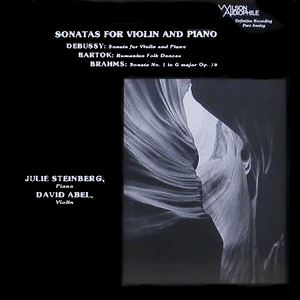
Wilson Audio has just released in DSD format several of the exceptional recordings David Wilson did back in the 1980′s using a John Curl modified 1″ Studer A80 “UltraSonic” reel-to-reel tape recorder at 30 ips, including the brilliant Sonatas for Piano and Violin featuring Julie Steinberg and David Able performing works by Bartok, Brahms and Debussy. I was interested in listening to this recording to see how the Magico S1s would reproduce the sound of Julie Steinberg’s Guanerius violin captured by a spaced-pair of Schoeps omnidirectional microphones. Among the works offered is Brahms Violin Sonata No. 1 in G major, Op.78, the “Rain Sonata”. This is a stunning recording, made in a small hall, whose ambiance is realistically portrayed. I have heard it in Dave Wilson’s listening room played over the Alexias, and while the Magico’s S1s cannot convey the same scale, in the critical midrange and treble, they do a marvelous job in reproducing the timbre of the violin. In particular, the tone is very sweet without becoming cloying, and, most importantly, the violin never becomes strident when the high notes are played aggressively, which is the downfall of many - too many - speakers which emphasize the treble in an effort to provide the detail some audiophiles crave. I find such speakers “bright”, and unlistenable beyond the first few minutes. Pizzicato notes, with their fast transients, are clean, though the S1s reveal none of the untoward analytic or clinical attributes. Pace, rhythm, and timing aficionados will be drawn to the S1s as the music flows seamlessly, with the dotted rhythms which are thematic in the piece providing appropriate tension. One anomaly I noted was that while the listening notes indicate that the violin should appeared just to the right of the left speaker, I found that it more often than not appear just to the left of the right speaker. Curious. I did double-check that my cables were connected correctly. Perhaps an error in the description.
Shifting gears, Eric Clapton recently spearheaded the effort to put together a tribute to legendary blues (and more) artist J.J. Cale, enlisting Tom Petty, Mark Knopfler, John Mayer, and others in the effort. The result was the just released album The Breeze: An Appreciation of J.J. Cale, named after Cale’s 1972 song Call Me the Breeze which became a staple cover for Lynyrd Skynyrd in the 1970s. Eric Clapton tackles it as the opening cut, playing it in the inimitable Cale style. The manner in which the album was recorded and mastered renders the soundstage almost monophonic, with all the action going on between the speakers, which makes it surprisingly intimate, with the musicians in your room rather than you in the recording venue. It is a distinction that is not always readily apparent. A pulsing bass drives the song along, but not relentlessly. Clapton’s leads are masterfully timed, and clean and effortless. The individual notes are sharply defined, but not staccato. This is likely the result of the Magico S1s being extremely dynamic and well controlled. No sloppiness going on with driver travel. Again, the tweeter is in check, and there is nothing bright about the sound, which is not to say any detail or extension is lacking. The resulting sound sharpens your focus, and draws you into the music. There is no chance of your mind wandering when listening to the S1s. This is an engaging loudspeaker ill-suited to multi-tasking.
Conclusion
There is no beating around the bush; the Magico S1 is an exceptionally fine loudspeaker. Its strengths lie in its precision, clarity, dynamics and coherence. It is fast too, ceding nothing in that regard to my Magnepan 1.7s. The midrange and high frequencies err on the side of neutrality rather than warmth, yet have an uncanny ability to get the timbre of acoustic instruments right. They are truthful rather than romantic, so pick your ancillaries accordingly. And while not the last word in low frequency heft (there are the Magico S3 and S5 for that), what bass there is honest, tight, and without overhang or bloat. It jumps out at you when required by the music. In the aluminum enclosure class, the YG Acoustic’s Carmel has met its match, at a significantly lower cost. These are an ideal speaker for a small listening room. They are long term keepers, and will bring out the best in future upgrades upstream - the essence of good value. Count me among the impressed.
- Frank Berryman
Specifications
• Type: Sealed box floorstanding loudspeaker
• Driver Complement: 1x 25mm MB30 tweeter, 1x 178mm M390 mid-woofer
• Sensitivity: 86dB
• Impedance: 4 ohms
• Frequency Response: 32Hz-50kHz
• Recommended minimum power: 50W
• Dimensions (WxHxD): 25cm x 117cm x 23cm
• Weight per loudspeaker: 43kg
Contact
Magico LLC
3170 Corporate Place
Hayward, CA 94545-3916
Telephone: (510) 649-9700
www.magico.net
Associated Equipment
Analog Source: VPI Scout; Dynavector 20X2; Musical Surroundings Phonomena II
Digital Sources: Meridian G08; Mac Mini; dCS Debussy; Audirvana Plus
Preamplifier: Meridian G02
Power Amplifiers: Pass Labs XA100.5
Loudspeakers: Magnepan 1.7
Analog Cables: Kimber Select KS1016 and KS1116
Digital Cables: Kimber Select KS2020 and KS2436 USB
Speaker Cables: Kimber Select KS6063 and KS9033
Power Cables: Kimber PK10G and PK14G
Headphones: Etymotic ER-4S
Accessories: Audience aR2p power conditioner



